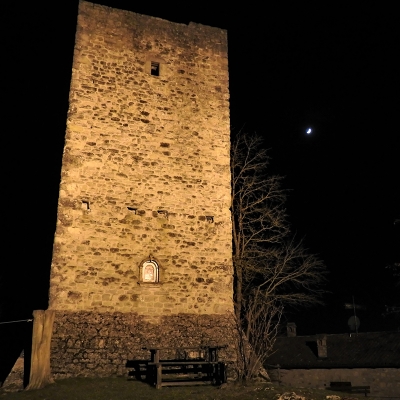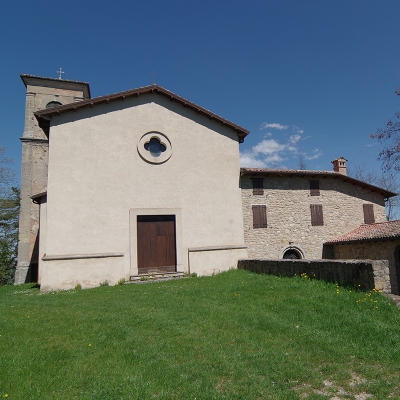Chiesa della Beata Vergine Assunta in Montalbano
Una chiesa ricca di testimonianze artistiche
The Chiesa della Beata Vergine Assunta (Church of Our Lady of the Assumption) is in the ancient village of Montalbano, located at the foot of Monte della Riva along the Belvedere pathway. The parish church acquired its current structure in the mid-18th century when the parish priest, Don Francesco Baraldi, had the current three naves, divided by pillars with stucco capitals built.
The high altar was built in the early 18th century with the scagliola plaster technique and has refined colour combinations. Don Baraldi worked to enhance it by building two side doors with small niches over them of scenographic taste. Two marble statues are housed here that date back to the early 15th century depicting the Annunciation and the Archangel Gabriel.
Several paintings to be pointed out are the large painting of the Blessed Virgin of the Assumption with St. George of the Mannerist period, and the Madonna and Saints with the Mysteries of the Rosary, dated to the early seventeenth century.
Among the paintings we particularly note the large painting depicting the Blessed Virgin of the Assumption with Saint George, of the Mannerist period, and the Madonna and Saints with the Mysteries of the Rosary, datable to the early seventeenth century.
The baptismal font, of type common to others in the area, has its lower part made of sandstone, completed by a walnut structure. Also worthy of a visit is the sacristy, where there is a seventeenth-century style wardrobe, but a work of the early eighteenth century and decorated with Bolognese tiles.
The church houses an eighteenth-century Traeri-Pianacci organ, built for the private chapel of a nearby noble residence, Villa Cavola, and donated by the current owners to the Municipality of Zocca. Thanks to the expertise of the famous restorer Paolo Tollari, the harmonies that this instrument can unleash have returned to accompany the solemn liturgical celebrations and to animate prestigious concert evenings for the benefit of the entire community.
The current bell tower was obtained from one of the towers of the castle. Its large bell dated to 1482 and decorated in bas-relief with scenes of the crucifixion and St. George killing the dragon is of great interest. Just beyond the church, a seventeenth-century portal in tuff gave access to the courtyard of the ancient tavern. Even the rectory underwent various transformations of use and was used as a rural house, barn and haybarn.
The baptism register, kept in the parish archives, records on 15 January 1730, the birth of Mauro Tesi, “il Maurino”, a famous engraver, architect, quadraturist and painter, a prominent eighteenth-century Emilian artist.






